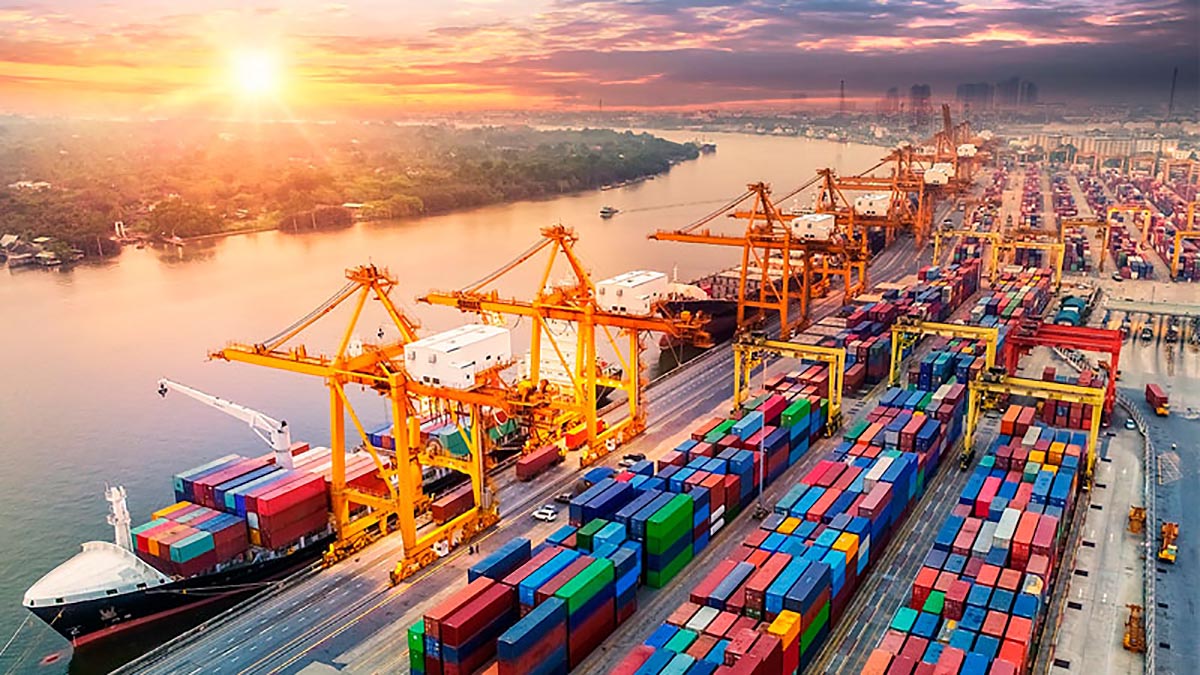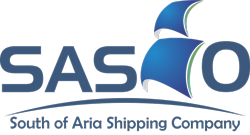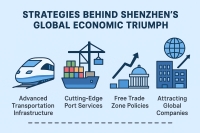Port of Shenzhen Brief History
The Port of Shenzhen, one of the world’s largest and most dynamic ports, narrates an astonishing transformation from a small fishing settlement to a global trade hub in southeastern China. The region, named after the Chinese word "Zhen" meaning “deep ditch,” was known 1,700 years ago as part of Bao’an County.
Until the late 20th century, it consisted mainly of fishing and farming villages. In 1979, under Deng Xiaoping’s economic reforms, Shenzhen became China’s first Special Economic Zone (SEZ), a turning point for the Port of Shenzhen China that paved the way for growth through foreign investment and modern infrastructure.
In the 1980s, the Port of Shekou rapidly expanded with advanced transportation infrastructure. The creation of a free trade zone, attraction of multinational companies, and innovations like an integrated ship registration system transformed Shenzhen Port Name into one of the busiest ports globally, handling 30 million TEUs in 2022.
The Port of Yantian and Port of Shekou, as key export-import hubs, played a vital role in this success, offering lessons for Iran’s strategic ports in the south like Chabahar Port, a vital part of commercial ports of Iran and Iran’s strategic gateway.

Six Strategies Behind Shenzhen’s Global Economic Triumph
Building on its robust transportation network, Shenzhen has leveraged a combination of innovative policies, state-of-the-art port services, and a business-friendly environment to transform itself into a global economic powerhouse. The following strategies illustrate how the city turned connectivity and infrastructure into sustainable growth.
Strategy 1: Advanced Transportation Infrastructure
The backbone of Shenzhen’s success is its state-of-the-art transportation network, seamlessly integrating air, rail, and sea logistics. Shenzhen International Airport, a major hub, handled 61.5 million passengers and 1.88 million tonnes of cargo in 2024, marking a 16.8% increase from 2023. Its proximity to Hong Kong International Airport and the Shenzhen Air Cargo Port ensures rapid cargo and passenger movement. High-speed rail lines, such as the 30-minute link to Guangzhou and connections to Beijing and Fujian, enhance logistics efficiency. The Shenzhen-Zhongshan Link, a 24-kilometer bridge-tunnel opened in 2024, has slashed regional travel times to 30 minutes, boosting trade connectivity. By 2026, the upgraded Huanggang Port will operate 24/7 with integrated rail links, cutting customs clearance times by 80% (From about 30 minutes to 5 minutes). This multimodal infrastructure solidifies the Port of Shenzhen’s role as a global logistics leader.( Shenzhen Bao'an International Airport, EyeShenzhen, Newsgd.com)
Strategy 2: Cutting-Edge Port Services
The Port of Shenzhen, encompassing terminals like the Port of Shekou and Yantian Port, is celebrated for its advanced port services. In 2024, it processed 29.88 million TEUs (Twenty-Foot Equivalent Units), a 14.9% rise from the previous year, with a target of 33 million TEUs for 2025. Operating 144 berths and partnering with 39 shipping companies, Shenzhen connects 230 international container routes to over 300 ports across 100 countries. Automated terminals at Mawan Smart Port, powered by AI and IoT, have reduced loading and unloading times by 25%. Green initiatives, including LNG bunkering with a goal of 450,000 cubic meters annually by 2025, position the Port of Shenzhen China as a leader in sustainable operations, setting a global benchmark for efficiency.
Strategy 3: Free Trade Zone Policies
Over the past two decades, the Qianhai & Shekou Free Trade Zone (FTZ) has become a cornerstone of Shenzhen’s international economic strategy, with actual utilized foreign investment reaching US$38.15 billion, accounting for 47.1% of the city’s total FDI (qh.sz.gov.cn). These zones have drawn numerous multinational enterprises by offering streamlined regulations, tax incentives, and a favorable business environment.
In 2025, Shenzhen introduced a new package of incentives to further strengthen the FTZ’s role in attracting global companies, including financial rewards ranging from 1% to 3% of newly added foreign investment (capped at RMB 50 million, ~US$6.9 million) and a one-time subsidy of RMB 5 million for enterprises establishing regional headquarters (sz.gov.cn; govt.chinadaily.com.cn).
These measures continue to enhance Shenzhen’s competitiveness, particularly in high-tech and green industries, while supporting the role of the Port of Shekou as a vital hub in global commerce. As a result, the FTZ not only reinforces Shenzhen’s integration into international supply chains but also consolidates its reputation as a leading magnet for foreign investment and innovation.
Strategy 4: Attracting Global Companies
Shenzhen has successfully positioned itself as a magnet for multinational corporations through targeted incentives and policy reforms. High-tech companies enjoy preferential tax treatments, while foreign-invested enterprises that inject over RMB 50 million are eligible for incentives ranging from 1% to 3% of the actual invested amount (capped at RMB 50 million). Additionally, qualified firms establishing regional headquarters with at least USD 10 million in annual investment receive a one-time reward of RMB 5 million (sz.gov.cn).
In the first two months of 2025, Shenzhen attracted RMB 8.16 billion in foreign capital, marking a 16% increase year-on-year (newsgd.com). In the first half of 2024, the city registered 3,683 new foreign-invested enterprises, accounting for a significant portion of the national total (yantian.gov.cnszlh.gov.cn).
Strategy 5: Port Operation Innovations
Shenzhen has transformed its port operations through intelligent automation and sustainable technologies. At the Yantian East Port, the first phase of fully automated container berths is scheduled for completion by the end of 2025. These berths will feature China’s largest twin-trolley automated quay cranes, delivering significantly enhanced efficiency across the port complex. (yantian.gov.cnyict.com.cn) Mawan Smart Port, launched in 2021, stands as the GBA’s first 5G-enabled smart port. It incorporates technologies such as AI, BeiDou positioning, blockchain, and an integrated ePort smart operating system to streamline operations and improve real-time control. (EyeShenzhensz.gov.cnchinadailyhk)
Shenzhen’s port system is pushing forward with green initiatives, including deployment of shore-to-ship power systems and preparation for LNG bunkering, aligning with international sustainability goals. (Maritime Education)
The Port of Shenzhen, encompassing multiple port zones like Yantian, Dapeng, Shekou, Dachan Bay, and Bao’an, remains one of the world’s busiest and fastest-growing container port networks, setting a modern benchmark for port management.
Strategy 6: Economic Autonomy Under National Framework
Shenzhen has achieved considerable economic autonomy while staying aligned with China’s national development framework. Once dependent on Hong Kong for global trade, the city has systematically invested in infrastructure to handle international business directly.
In 2024, Shenzhen’s GDP reached RMB 3.68 trillion, growing approximately 5.8% year-on-year (ecns.cnChina DailyWikipedia). Strategic emerging industries contributed RMB 1.56 trillion, accounting for 42.3% of the city’s GDP (sz.gov.cnCGTN News.) Looking ahead, Shenzhen is targeting GDP growth of 5.5% in 2025 (sz.gov.cnEyeShenzhen). In the first half of 2025, the city achieved 5.1% GDP growth, with output reaching RMB 1.83 trillion (szdaily.comEyeShenzhen). Finally, the Port of Shenzhen remains one of the busiest container hubs in the world, underpinning the city’s vital role in global supply chains and its economic dynamism (CGTN NewsWikipedia).
Lessons from Shenzhen for Developing Iran’s Strategic Ports
The transformation of the Port of Shenzhen into a global trade hub offers a clear roadmap for Iran’s Strategic Ports in north and south, particularly in underdeveloped coastal regions such as the Makran coast. Just as the Port of Shenzhen China leveraged advanced transportation infrastructure and cutting-edge port services to attract global investment, Iran’s commercial ports of Iran—including the Chabahar port, one of the major ports in Iran—can achieve similar success. Shenzhen’s model highlights two key pillars: first, the development of integrated logistics and modern shipping ports capabilities; second, creating a business-friendly environment to draw multinational companies.
The natural and untapped potential of Iran’s coastline, with pristine areas similar to those that surrounded Shenzhen before its rise, offers a unique advantage. By following the Shenzhen port name example, Iranian authorities can enhance operational efficiency across international sea ports in Iran, upgrade the list of all ports in Iran, and strengthen the role of Iran’s strategic gateway in regional and global trade. Lessons from the Port of Shekou and other Shenzhen terminals underscore the importance of automation, sustainability initiatives, and foreign partnerships. Adopting these strategies, Iran Ports can evolve into internationally competitive hubs, with famous ports of Iran like Chabahar port serving as a beacon for investment and trade expansion.
SASCO, one of the best freight forwarders in Iran , strives to fully utilize the capacity of domestic ports like Chabahar and Bandar Abbas, as well as international opportunities. By focusing on optimizing supply chains and leveraging modern infrastructure, SASCO plays a pivotal role in strengthening Iran’s position as a regional hub for global trade.







